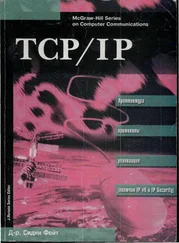The security controls route had been tried with Huawei, which set up a centre in Oxfordshire in 2010 where GCHQ could study its software as a condition of the company's being allowed to sell in the UK. While the analysts did not find any backdoors, their 2019 report surfaced some scathing criticisms of Huawei's software engineering practices [933]. Huawei had copied a lot of code, couldn't patch what they didn't understand, and no progress was being made in tackling many problems despite years of promises. There was an unmanageable number of versions of OpenSSL, including versions that had known vulnerabilities and that were not supported: 70 full copies of 4 different OpenSSL versions, and 304 partial copies of 14 versions. Not only could the Chinese hack the Huawei systems; so could anybody. Their equipment had been excluded for some years from UK backbone routers and from systems used for wiretapping. The UK demanded “sustained evidence of improvement across multiple versions and multiple product ranges” before it will put any more trust in it. A number of countries, including Australia and New Zealand, then banned Huawei equipment outright, and in 2019 Canada arrested Huawei's CFO (who is also its founder's daughter) following a US request to extradite her for conspiring to defraud global banks about Huawei's relationship with a company operating in Iran. China retaliated by arresting two Canadians, one a diplomat on leave, on spurious espionage charges, and by sentencing two others to death on drugs charges. The USA hit back with a ban on US suppliers selling chips, software or support to Huawei. The UK banned the purchase of their telecomms equipment from the end of 2020 and said it would remove it from UK networks by 2027. Meanwhile, China is helping many less developed countries modernise their networks, and this access may help them rival the Five Eyes' scope in due course. Trade policy, industrial policy and cyber-defence strategy have become intertwined in a new Cold War.
Strategically, the question may not be just whether China could use Huawei routers to wiretap other countries at scale, so much as whether they could use it in time of tension to launch DDoS attacks that would break the Internet by subverting BGP routing. I discuss this in more detail in the section 21.2.1. For years, China's doctrine of ‘Peaceful Rise’ meant avoiding conflict with other major powers until they're strong enough. The overall posture is one of largely defensive information warfare, combining pervasive surveillance at home, a walled-garden domestic Internet that is better defended against cyber-attack than anyone else's, plus considerable and growing capabilities, which are mainly used for diligent intelligence-gathering in support of national strategic interests. They are starting to bully other countries in various ways that sometimes involve online operations. In 2016, during a dispute with Vietnam over some islands in the South China Sea, they hacked the airport systems in Hanoi and Ho Chi Minh City, displaying insulting messages and forcing manual check-in for passengers [1197]. In 2020, the EU has denounced China for spreading disruptive fake news about the coronavirus pandemic [1580], and Australia has denounced cyber-attacks that have happened since it called for an international inquiry into the pandemic's origins [937]. These information operations displayed a first-class overt and covert disinformation capability and followed previous more limited campaigns in Hong Kong and Taiwan [564]. Diplomatic commentators note that China's trade policy, although aggressive, is no different from Japan's in the 1970s and not as aggressive as America's; that the new Cold War is just as misguided and just as likely to be wasteful and dangerous as the last one; that China still upholds the international order more than it disrupts it; and that it upholds it more consistently than the USA has done since WWII [704]. China's external propaganda aim is to present itself as a positive socio-economic role model for the world, as it competes for access and influence and emerges as a peer competitor to the USA and Europe.
Russia, like China, lacks America's platform advantage and compensates with hacking teams that use spear-phishing and malware. Unlike China, it takes the low road, acting frequently as a spoiler, trying to disrupt the international order, and sometimes benefiting directly via a rise in the price of oil, its main export. The historian Timothy Snyder describes Putin's rise to power and his embrace of oligarchs, orthodox Christianity, homophobia and the fascist ideologue Ivan Ilyin, especially since rigged elections in 2012. This leaves the Russian state in need of perpetual struggle against external enemies who threaten the purity of the Russian people [1802]. Its strategic posture online is different from China's in four ways. First, it's a major centre for cybercrime; underground markets first emerged in Russia and Ukraine in 2003–5, as we'll discuss in the following section on cybercrime. Second, although Russia is trying to become more closed like China, its domestic Internet is relatively open and intertwined with the West's, including major service firms such as VK and Yandex [605]. Third, Russia's strategy of re-establishing itself as a regional power has been pursued much more aggressively than China's, with direct military interference in neighbours such as Georgia and Ukraine. These interventions have involved a mixed strategy of cyber-attacks plus ‘little green men’ – troops without Russian insignia on their uniforms – with a political strategy of denial. Fourth, Russia was humiliated by the USA and Europe when the USSR collapsed in 1989, and still feels encircled. Since about 2005 its goal has been to undermine the USA and the EU, and to promote authoritarianism and nationalism as an alternative to the rules-based international order. This has been pursued more forcefully since 2013; Snyder tells the history [1802]. With Brexit, and with the emergence of authoritarian governments in Hungary, Turkey and Poland, this strategy appears to be winning.
Russian cyber-attacks came to prominence in 2007, after Estonia moved a much-hated Soviet-era statue in Tallinn to a less prominent site, and the Russians felt insulted. DDoS attacks on government offices, banks and media companies forced Estonia to rate-limit its external Internet access for a few weeks [692]. Russia refused to extradite the perpetrators, most of whom were Russian, though one ethnic-Russian Estonian teenager was fined. Sceptics said that the attacks seemed the work of amateurs and worked because the Estonians hadn't hardened their systems the way US service providers do. Estonia nonetheless appealed to NATO for help, and one outcome was the Tallinn Manual, which sets out the law of cyber conflict [1667]. I'll discuss this in more detail in the chapter on electronic and information warfare, in section 23.8. The following year, after the outbreak of a brief war between Russia and Georgia, Russian hackers set up a website with a list of targets in Georgia for Russian patriots to attack [1994].
Estonia and Georgia were little more than warm-ups for the Ukraine invasion. Following demonstrations in Maidan Square in Kiev against pro-Russian President Yanukovich, and an intervention in February 2014 by Russian mercenaries who shot about a hundred demonstrators, Yanukovich fled. The Russians invaded Ukraine on February 24th, annexing Crimea and setting up two puppet states in the Donbass area of eastern Ukraine. Their tactics combined Russian special forces in plain uniforms, a welter of propaganda claims of an insurgency by Russian-speaking Ukrainians or of Russia helping defend the population against Ukrainian fascists or of defending Russian purity against homosexuals and Jews; all of this coordinated with a variety of cyber-attacks. For example, in May the Russians hacked the website of the Ukrainian election commission and rigged it to display a message that a nationalist who'd received less than 1% of the vote had won; this was spotted and blocked, but Russian media announced the bogus result anyway [1802].
Читать дальше











